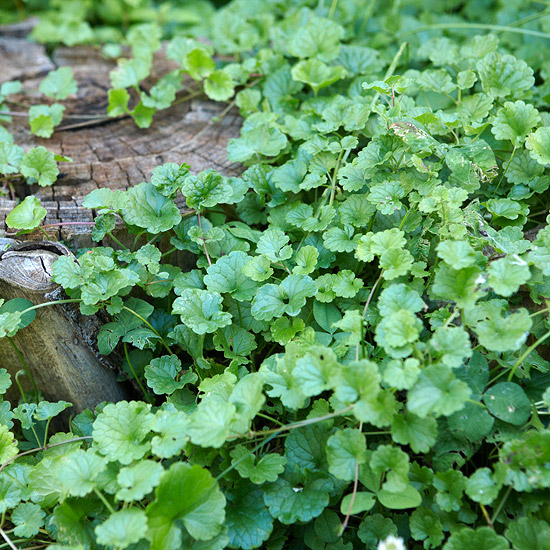






This aggressive weed likes moist, shaded areas, but it also grows in sun and will spread into turf and planting beds. Also called ground ivy, the plant is actually in the mint family, which is known for its tendency to spread. It can quickly form a dense mat, which smothers other vegetation.
Creeping Charlie has round or kidney-shape leaves with scalloped edges. The leaves grow opposite each other and are bright green and shiny. The plant puts out vining stems or runners that can root at each node, which is where the leaves attach to the stem. When you pull this shallow-root weed, you likely will notice a couple of things: The roots along the stems make it seem as if they are clinging to the ground for dear life. The plant emits a mint odor when cut or crushed. Its stems are square, and in the spring it has small, funnel-shape or tubular purple flowers.
Check our Weed Identification Guide to determine exactly what might be in your landscape.
continue reading belowIf you've spotted Creeping Charlie early, repeated hand-weeding is an option. If the weed has spread, it can be difficult to control. Consider a broadleaf triple-mix herbicide containing these key ingredients: 2, 4-D, Mecoprop (MCPP) and Dicamba. Standard postemergent herbicides without these components won't work as well.
Fall is the best time to apply herbicide to control broadleaf weeds such as this one, when the plant is in flower in springtime is also a good time. You might need to make a couple of applications, depending on your infestation. If so, spray about two weeks apart. Avoid getting the herbicide on other plants. Always read and follow label directions whenever you use herbicides.
If you go the route of hand-pulling, this is not green matter to add to the compost pile, unless you want a greater challenge next year. Research on the effectiveness of boron, found in borax products in the laundry aisle of the grocery store, is inconclusive.
The presence of Creeping Charlie signals that the growing conditions for your lawn may need to be addressed. Too much shade, wet soils or poor fertility could be issues. A healthy stand of turf makes it harder for Creeping Charlie to crash your yard.
Any open areas in your landscape, such as planting beds, can be areas that Creeping Charlie love. Keep the areas well-mulched to reduce problems with this and other weeds.
For help in achieving strong, healthy turf, see our video on easy lawn-care tips.
If heavy shade calls for a groundcover instead of turf, we have ideas for easy-growing, weed-smothering options.
Copyright © www.100flowers.win Botanic Garden All Rights Reserved